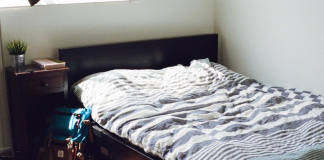Moving can cost you a lot of money, which is why one of the first things you begin to look for is receiving the deposit you made on your place before moving in. Even though most deposits aren’t massive, they can help you afford the moving materials or hire a company to assist with the move.
Before you get excited about receiving your deposit, you’ve got to do everything it takes to increase your chances of getting it back. Below you’ll find a guide that lists some ways you increase the chances of getting the deposit back.

Hire a Professional Cleaner
One of the first things you should do before expecting your deposit back is to hire a cleaning company or perform a deep clean yourself. In most leases, one of the statements made before you move in is that you need to return the property to move-in-ready condition for the next tenant.
This means that the way the property looked when you moved into it is how it should look when you move out. Other than a few cosmetic updates needed, the property manager of the property shouldn’t have to do a lot to the place you’ve been living.
We understand that not everyone has time to clean their place when you’re in the midst of the hustle and bustle of moving. When this happens, you should consider an end of tenancy cleaning in London service. This means working with a company that handles the cleanings of properties that people are moving out of.
The company understands the different areas that property managers will look into and want to ensure that the property is left in the best condition possible. Having a company like this on your side when you’re moving out can help you check one more thing off your checklist that could be causing stress during your move.
Check the Lease
Before you move in, you should take the time to read over the lease in-depth because once you sign it, you’re bound by what you’ve signed and what’s written in the lease. Even if you have to re-read the lease multiple times, you’ll want to make sure you’re clear about everything in the lease and the agreement between you and the property manager.
Several items can be found in your lease and will help in creating a smoother moving-out process. For instance, the lease will detail how much notice you need to give to your property manager about moving out and how to give the notice.
Some places ask you to submit an electronic form of communication, while others suggest that you provide the notice in writing for the property manager to insert directly into your tenant file. Not only will this area lay out how to submit your notice, but it will also provide details about getting your security deposit back.
Such as where the deposit will be sent and in what form it will be given back, if there are no additional charges you owe once you’ve moved out. Take time to note the number of days you have to wait before receiving your deposit back and what the property manager will inspect during the move-in and move-out inspections.
Provide Documentation of Damages
During the initial walkthrough of the property, you should’ve made a note of any pre-existing damages while the property manager is present. After they have been noted, you should’ve emailed a follow-up about these damages and if any actions will be taken to repair them.
When you’re about to move out, you need to provide this document to the property manager to make sure you’re not being charged with repairs or items that were broken before you moved in. It also helps to take as many pictures of the damaged areas of the property to support the damages that were there before.
By doing this, you reduce the chances of being the one that takes the fall for the damages. When damages are found in the home you caused, it can reduce the amount of your deposit you receive back.
Fix Areas You’ve Damaged
Before you move out, determine how many places in the home you’ve damaged and make a plan to fix them before you move. For instance, if you mounted a television on the wall, you’ll want to set aside time to fill in the holes in the wall because this is a part of returning the property to its original condition.
If there are more extensive repairs, such as broken plumbing or electric issues, it’s important that you call in a professional to perform the repairs. It’s only fair because these damages took place over time when you lived in the home and apartment.
Yes, you will need to spend money to get these things fixed, but you won’t have to worry about your security deposit being withheld or being charged more after you’ve moved.
Conduct A Final Walkthrough
The last walkthrough you conduct will be with the landlord before you return your keys to them. However, you need to schedule a walkthrough by yourself and ensure you’ve done everything you needed to when returning the home to its initial condition.
Take your time during the walkthrough and go from room to room, looking over each room to ensure that the repairs you need to be made are done. When you’ve completed your own walkthrough, you can contact the landlord and inform them that you’re ready to walk through with them.
Remember, after this walkthrough, you will be leaving the property and handing over all items, such as keys, that provide you access to it.
Increasing the Chances of Getting Your Security Deposit Back
When people move out of their homes, the last thing they want is for their security deposit to be withheld. This is why we’ve provided a list of ways for you to increase the chances of getting it back, such as hiring a cleaning company and repairing the damages you’ve made.
When you do these things, it’s only a matter of time before your security deposit arrives in the mail. For more on security deposits or rental property-related topics, continue scrolling our website.

